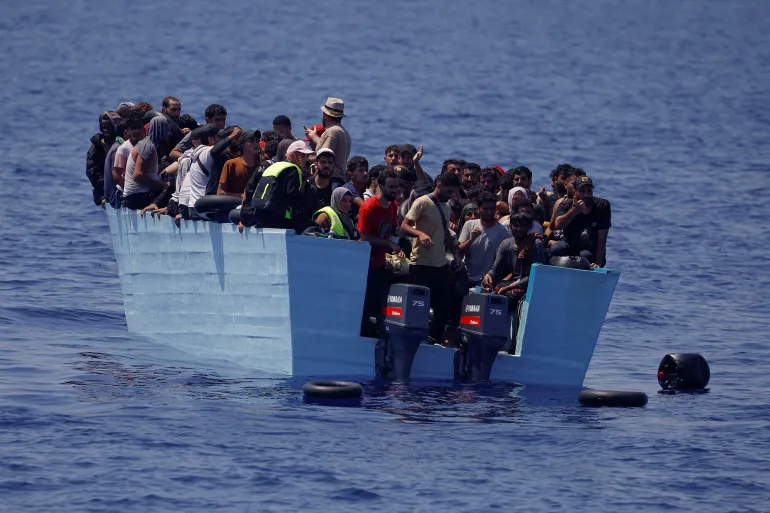A haunting tragedy unfolded off the coast of Libya as at least 60 migrants, including nationals from Pakistan and Egypt, are feared dead following two separate shipwrecks in the Mediterranean Sea. The incidents, reported by the International Organization for Migration (IOM), are the latest in a growing list of deadly crossings that continue to claim lives along one of the world’s most perilous migration routes.
The first disaster occurred on June 12 near the Libyan port city of Tripoli. According to the IOM, the boat capsized with 26 people on board. Only five survivors were rescued. The remaining 21, including women and children, are missing and presumed dead. Among them were migrants from Eritrea, Sudan, Pakistan, and Egypt.
Just days later, a second shipwreck happened approximately 35 kilometers from the eastern Libyan port city of Tobruk. Only one survivor was found, who reported that 39 others had drowned. The full scale of the tragedy is still unfolding, as authorities continue to assess the extent of the loss.
In response to the disasters, Othman Belbeisi, the IOM’s Regional Director for the Middle East and North Africa, issued a powerful statement: “With dozens feared dead and entire families left in anguish, IOM is once again urging the international community to scale up search and rescue operations and guarantee safe, predictable disembarkation for survivors.”
The IOM revealed that as of mid-June, at least 743 migrants have lost their lives attempting to cross the Mediterranean Sea this year alone. Many more remain missing, and their stories are likely to remain untold.
The Mediterranean, particularly the central route from Libya to Europe, remains the deadliest migration path in the world. Despite international attention, many migrants continue to fall victim to treacherous waters, overcrowded boats, and the ruthless tactics of smuggling networks that often place profit over human lives.
As search and rescue operations remain limited and humanitarian efforts face increased restrictions, the risks only grow. The IOM warns that “increasingly dangerous smuggling practices, limited rescue capacity and growing restrictions on humanitarian operations” are making the crisis worse.
Italy has reported a 15% increase in migrant landings compared to the same time last year, according to the UN High Commissioner for Refugees (UNHCR). Most of the arrivals are believed to have departed from Libya, a country that has become both a departure point and a detention zone for many migrants hoping to reach Europe.
The rising death toll has once again prompted urgent calls for coordinated international action. Human rights advocates and aid agencies continue to stress the need for legal migration pathways, safer crossings, and the dismantling of smuggling networks that exploit desperation.
These latest tragedies serve as a serious reminder of the human cost behind migration headlines. Each number represents a person—someone’s son, daughter, parent, or friend—who risked everything in search of a better future.
As the world watches and debates migration policy, boats continue to vanish beneath the waves of the Mediterranean. And unless stronger efforts are made to ensure protection, accountability, and safe migration options, the sea will keep swallowing more lives—silently, and without justice.

